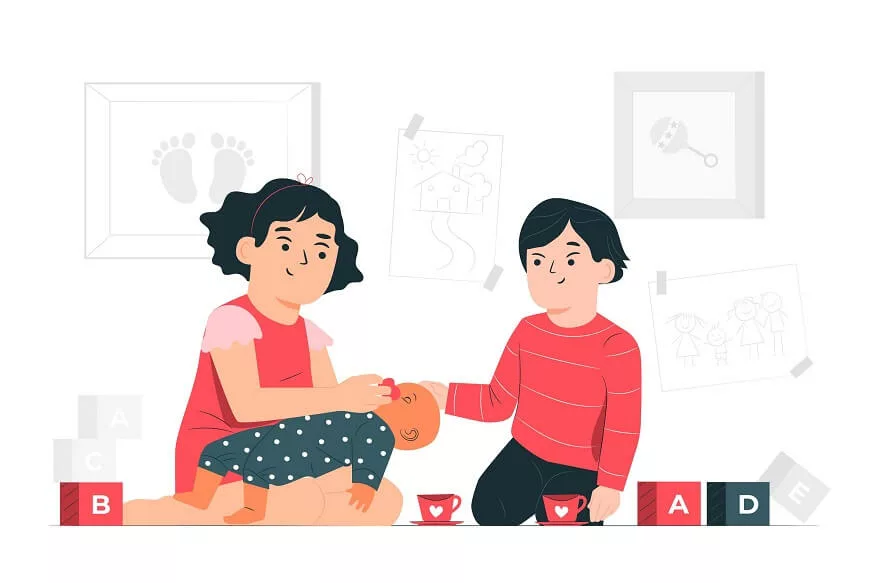In the realm of early childhood, the transition from the restorative embrace of nap time to the more tranquil space of quiet time marks a significant juncture. As preschoolers grow, so do their sleep needs and patterns. This transition is a delicate balance, considering the importance of rest while acknowledging the evolving nature of a child’s routine. In this exploration, we navigate the landscape of transitioning from nap time to quiet time, diving into the considerations, benefits, and nurturing the essence of calmness for the little ones.
Understanding the Nap-Time Dilemma
The American Academy of Pediatrics (AAP) recommends daily naps for preschoolers, acknowledging their vital role in supporting a child’s overall health and development. While individual needs vary, a general guideline suggests 10 to 13 hours of sleep per day for preschoolers, including nighttime sleep and naps.
Also Read: Best Ways to Sleep Train Your Baby – Methods, Tips and When to Try It
Factors Influencing Nap Needs
Here are the factors that influencing nap needs:
- Age: Younger preschoolers typically require more nap time, with the need gradually decreasing as they grow.
- Activity Level: Highly active children may need more nap time to recharge.
- Individual Variations: Recognising and respecting individual variations in sleep needs is essential.
- Infancy: Multiple short naps throughout the day.
- Early Toddlerhood: Transition to two naps, usually morning and afternoon.
- Late Toddlerhood/Preschool: Shift towards one nap in the afternoon.
Also Read: How To Put Newborn To Sleep With Appropriate Sleepwear
Signs of Transitioning from Nap Time to quiet time
Here are some signs that a child may be ready to transition from nap time to quiet time:
- Shortened Naps: If your child consistently takes shorter naps or refuses to nap altogether, it might be a sign that they are ready for a change.
- Difficulty Falling Asleep at Bedtime: If your child is resisting bedtime or having trouble falling asleep at night, it could be because they are getting too much daytime sleep.
- Increased Energy Levels: If your child seems more energetic and alert during the day, it may indicate that they are ready to reduce their nap time.
- Age-Appropriate: As children grow, their sleep needs change. Older toddlers and preschoolers may naturally begin to outgrow the need for a long afternoon nap.
- Consistent Wake-Up Times: If your child consistently wakes up at the same time each morning and seems well-rested, it might be a sign that they are getting enough sleep without a long nap.
- Willingness to Rest: If your child is willing to rest quietly or engage in quiet activities during the previous nap time, it shows an ability to transition to a quieter period without fully sleeping.
- Flexible Schedule: If your child’s schedule allows for a later bedtime without affecting their sleep quality, it may be a sign that they can manage without a long nap during the day.
- Daycare or Preschool Transition: Sometimes, transitions from nap time to quiet time are prompted by changes in the child’s environment, such as starting daycare or preschool, where nap times may be structured differently.
- Parental Observation: Parents who observe their child’s behavior and adapt to their individual needs can often determine when it’s appropriate to transition from nap time to quiet time.
Also Read: Sleep Regression in Infants – Signs, Causes and What to Do
How To Transition From Nap Time To Quiet Time
Transitioning from nap time to quiet time can be a gradual process to help children adjust. Here are some tips to make the transition smoother:
- Gradual Reduction: Instead of eliminating nap time abruptly, gradually reduce the length of the nap. Shorten it by 15-30 minutes at a time until it naturally evolves into a quiet time.
- Adjust Bedtime: If you’re reducing daytime sleep, consider adjusting bedtime slightly earlier to ensure your child gets enough overall sleep.
- Quiet Time Routine: Establish a quiet time routine that includes calming activities. This could be reading books, listening to soft music, or engaging in quiet play. Create a routine that signals a shift from active play to a more relaxed atmosphere.
- Comfort Items: Allow your child to have comfort items during quiet time, such as a favorite stuffed animal or blanket. This can provide a sense of security and make the transition easier.
- Designated Space: Create a designated quiet time space, whether it’s in their room or a cozy corner in another part of the house. Make it comfortable with cushions or a small blanket.
- Quiet Activities: Provide a variety of quiet activities to keep your child engaged. This could include puzzles, coloring books, or quiet toys. Avoid stimulating activities that might interfere with the winding-down process.
- Communicate Expectations: Explain the transition to your child in a positive way. Let them know that as they grow, their need for daytime sleep changes and quiet time is an opportunity for rest and relaxation.
- Be Consistent: Consistency is key. Stick to the new routine as much as possible, even on weekends. Consistency helps children understand expectations and adapt more easily.
- Monitor Behaviour: Observe how your child responds to the transition. If they consistently resist or show signs of tiredness during the day, you may need to reassess and make adjustments accordingly.
- Encourage Independence: Use this time to encourage independent play. Provide toys and activities that your child can engage with on their own, fostering a sense of autonomy.
- Flexible Schedule: Be open to adjusting the schedule based on your child’s needs. If they seem overtired, consider reintroducing a short nap or adjusting quiet time activities.
- Positive Reinforcement: Praise your child for successfully transitioning to quiet time. Positive reinforcement can motivate them to embrace the new routine.
Also Read: What Happens to Your Body When You Sleep
In the transition from nap time to quiet time, preschoolers embark on a journey of self-discovery and growth. This delicate balance between rest and quiet engagement not only supports their physical well-being but also nurtures cognitive, emotional, and social development. As educators, parents, and caregivers, the emphasis lies not just in the transition itself but in the creation of an environment that honours each child’s unique needs.
The symphony of tranquillity that unfolds during quiet time is a testament to the collective efforts of those involved in a child’s care. Through this transition, preschoolers learn the art of balance, embracing moments of calmness as an integral part of their day. In the gentle hush of quiet time, the seeds of mindfulness and self-regulation are sown, laying the foundation for a lifetime of balanced well-being. For more such blogs, refer to EuroSchool.










